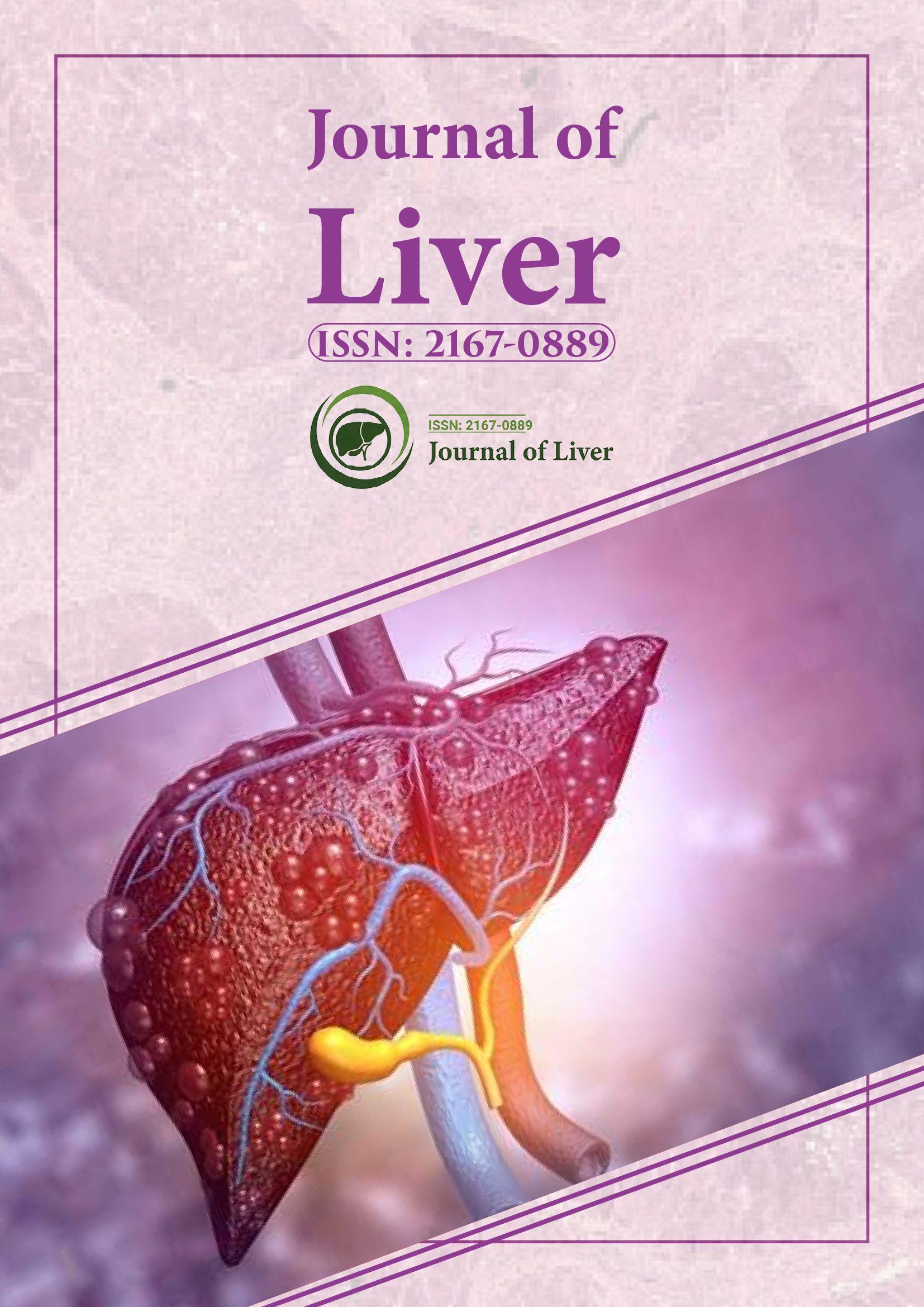Indexed In
- Open J Gate
- Genamics JournalSeek
- Academic Keys
- RefSeek
- Hamdard University
- EBSCO A-Z
- OCLC- WorldCat
- Publons
- Geneva Foundation for Medical Education and Research
- Google Scholar
Useful Links
Share This Page
Journal Flyer

Open Access Journals
- Agri and Aquaculture
- Biochemistry
- Bioinformatics & Systems Biology
- Business & Management
- Chemistry
- Clinical Sciences
- Engineering
- Food & Nutrition
- General Science
- Genetics & Molecular Biology
- Immunology & Microbiology
- Medical Sciences
- Neuroscience & Psychology
- Nursing & Health Care
- Pharmaceutical Sciences
Perspective - (2025) Volume 14, Issue 1
Strategies for Managing the Delayed Recovery Phase in Hepatitis A and E
Sheng Guo*Received: 25-Feb-2025, Manuscript No. JLR-25-29103; Editor assigned: 27-Feb-2025, Pre QC No. JLR-25-29103 (PQ); Reviewed: 13-Mar-2025, QC No. JLR-25-29103; Revised: 20-Mar-2025, Manuscript No. JLR-25-29103 (R); Published: 27-Mar-2025, DOI: 10.35248/2167-0889.25.14.243
Description
Hepatitis A virus (HAV) and hepatitis E virus (HEV) are major causes of acute viral hepatitis globally. While both are usually self-limiting, they may exhibit atypical forms, including cholestatic hepatitis. The cholestatic variant is most commonly associated with HAV, although HEV can also present with similar features, particularly in older adults and individuals with pre-existing liver conditions. Patients with this presentation may experience prolonged illness, laboratory abnormalities and impaired quality of life.
Cholestatic phase
In the context of viral hepatitis, cholestasis is believed to result from hepatocellular injury disrupting bile secretion. The bile canalicular membrane may be damaged by immune-mediated mechanisms or direct viral cytopathy, impairing bile flow. Inflammatory cytokines and altered transporter proteins contribute to bile accumulation in hepatocytes and serum, which manifests clinically as jaundice, dark urine, pale stools, and intense itching.
Clinical features and diagnosis
Patients with cholestatic hepatitis often present with persistent jaundice beyond 4 weeks, marked pruritus, fatigue and anorexia. Laboratory findings include elevated total and direct bilirubin, increased Alkaline Phosphatase (ALP) and raised Gamma-Glutamyl Transpeptidase (GGT). Aspartate Aminotransferase (AST) and Alanine Aminotransferase (ALT) may normalize or remain mildly elevated.
Imaging, such as abdominal ultrasonography, is often performed to exclude obstructive causes. Liver biopsy, although rarely required, can confirm intrahepatic cholestasis when diagnosis is uncertain.
Symptomatic management
The mainstay of treatment remains supportive care, aimed at symptom relief and maintenance of nutritional and hydration status. Rest, a balanced diet and adequate fluid intake are advised. In most patients, symptoms gradually resolve over weeks to months without specific therapy. For pruritus, antihistamines such as hydroxyzine or diphenhydramine may offer temporary relief. However, their sedative properties can limit daytime use. Cholestyramine, a bile acid-binding resin, is commonly used to relieve pruritus by reducing circulating bile acids. It is administered before meals and can be effective in controlling symptoms in many patients. Adverse effects include bloating and constipation.
Rifampicin, a hepatic enzyme inducer, has also been utilized to treat cholestatic pruritus, though its use is limited by the risk of hepatotoxicity, especially in acute liver injury. Its role in hepatitis A and E-related cholestasis has been described in limited observational studies.
Therapies and considerations
There is limited evidence on the use of plasmapheresis, Intravenous Immunoglobulin (IVIG), or other immuno-modulatory therapies in managing the cholestatic phase of HAV or HEV. These are generally reserved for fulminant hepatic failure or immune-mediated complications rather than isolated cholestasis.
Vitamin supplementation, particularly fat-soluble vitamins (A, D, E, K), may be indicated in prolonged cholestasis, as malabsorption can occur. Monitoring of coagulation status and nutritional parameters is essential in patients with persistent symptoms.
Outcomes and prognosis
The cholestatic phase of hepatitis A and E, although distressing, generally resolves without long-term sequelae. Most patients recover fully within 8–12 weeks of symptom onset, although cases lasting several months have been documented. The prognosis is generally favorable, with very low risk of progression to chronic liver disease. However, prolonged jaundice can significantly affect quality of life, work productivity and psychological well-being, underscoring the need for supportive measures and reassurance.
Limitations
The evidence base for specific therapies in cholestatic hepatitis A and E remains limited, largely comprising small observational studies and a few randomized trials. There is considerable heterogeneity in diagnostic criteria, treatment regimens and outcome measures, limiting direct comparison between studies. Moreover, most data originate from endemic regions and generalizability to populations with different comorbidities and healthcare settings may be restricted. Future studies should aim to standardize definitions, include larger patient cohorts and compare therapies in controlled settings.
Cholestatic hepatitis following infection with HAV or HEV is an uncommon but clinically significant variant that can lead to prolonged symptoms and laboratory abnormalities. Supportive care remains the foundation of management, with cholestyramine, antihistamines and UDCA offering symptom control in selected patients. Corticosteroids may be beneficial in some cases, particularly when symptoms are severe or prolonged.
Citation: Guo S (2025). Strategies for Managing the Delayed Recovery Phase in Hepatitis A and E. J Liver. 14:243.
Copyright: © 2025 Guo S. This is an open-access article distributed under the terms of the Creative Commons Attribution License, which permits unrestricted use, distribution, and reproduction in any medium, provided the original author and source are credited.
